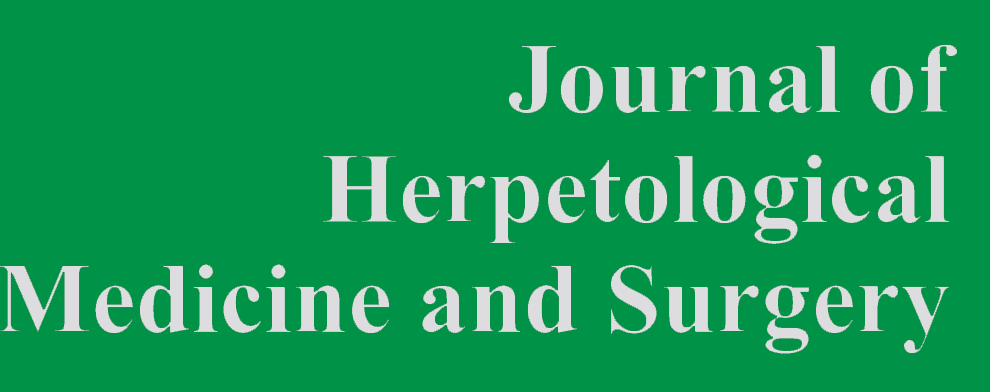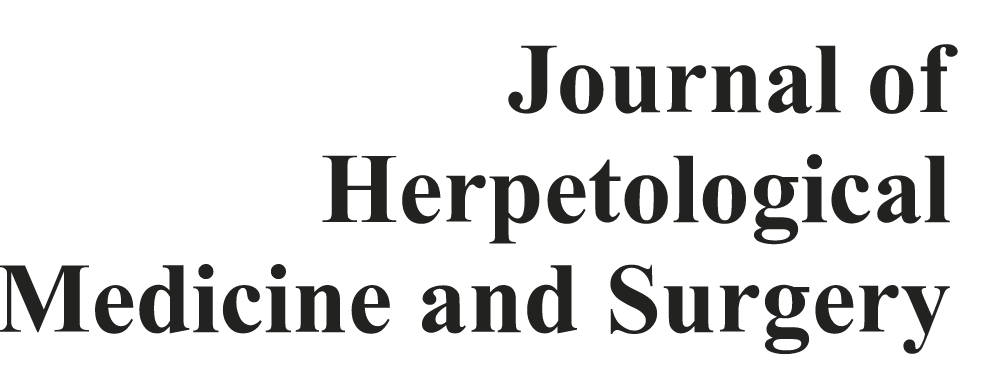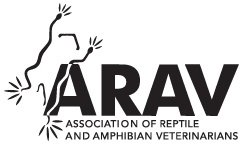Ophidian Serpentoviruses: A Review and Perspective
Ophidian serpentoviruses, initially referred to as nidoviruses, were first documented in captive pythons nearly 10 yr ago. Since then, much has been learned about these important pathogens, now classified in the subfamily Serpentovirinae of the family Tobaniviridae and representing important emerging pathogens that threaten captive snakes. Serpentoviral infections are best characterized in pythons (family Pythonidae), but have also been documented in boas (family Boidae) and colubrids (family Colubridae), as well as shingleback skinks (Tiliqua rugosa), veiled chameleons (Chamaeleo calyptratus), and Bellinger River snapping turtles (Myuchelys georgesi). Clinical signs include increased oral mucous secretion, oral mucosal reddening, dyspnea, anorexia, and weight loss. Subclinical infections can also occur, and multiple studies report a lack of correlation between clinical signs and the presence of serpentoviral nucleic acids in snakes. Lesions associated with serpentoviral infections predominantly occur in the upper respiratory and gastrointestinal tracts, but can also extend to the lungs. Microscopically, these lesions may consist of inflammation, epithelial proliferation, and proliferative interstitial pneumonia, which can be complicated by concurrent bacterial bronchopneumonia. The most common method of diagnosis is reverse transcriptase polymerase chain reaction to detect viral RNA, and oral/choanal swabs are reliable samples for ante- or postmortem diagnosis. Specific treatment protocols have not yet been described, and management is based on supportive care. This paper presents a narrative review of all serpentovirus publications to date with perspective from researchers working to further characterize these pathogens, with the goal of serving as a comprehensive clinical and diagnostic overview for clinicians, zoological curatorial staff, wildlife biologists, and hobbyists.Abstract

Clinical and gross manifestations of serpentoviral infections. (A) A ball python (Python regius) with a serpentoviral (ball python nidovirus 1 [BPNV-1]) infection, exhibiting increased oral mucoid secretions that are commonly seen in infected pythons. There are also low numbers of multifocal oral petechiae. (B) Oral cavity of a ball python with a BPNV-1 infection. The oral mucosa is diffusely thickened, with a roughened appearance to the mucosal surface, and widespread mucosal congestion with generalized petechiation. (C) Lung and trachea of a ball python with a BPNV-1 infection. Within the lumen of the trachea, there is an aggregate of mucus and exudate that nearly occludes the tracheal lumen (arrow). Within the lung, a small amount of mucus and fluid is present within the vorbronchus, but faveoli remain patent throughout. The faveolar septa are diffusely thickened. (D) Lung of a ball python with a BPNV-1 infection complicated by a secondary gram-negative bacterial infection. The lumen of faveoli and the vorbronchus are extensively obscured or occluded by aggregates of inflammatory debris with some hemorrhage. No culture was performed to identify the bacteria present. (E) Lung of a green tree python (Morelia viridis) with a serpentovirus infection (novel species, not otherwise characterized). The pulmonary parenchyma is diffusely congested, wet, and heavy. The vorbronchus contains a moderate amount of mucus and exudate.

Varying microscopic severity of ball python nidovirus 1 (BPNV-1)–associated pneumonia in ball pythons (Python regius). H&E stain. (A) Normal lung. Note the presence of faveolar capillaries immediately adjacent to the faveolar lumen. The pneumocytes overlying faveolar capillaries are essentially inapparent. × 600 magnification. (B) Mild proliferative interstitial pneumonia. The pulmonary interstitium is mildly expanded and contains low numbers of mononuclear cells, dominated by lymphocytes, and low numbers of granulocytes. Notably, there is widespread hypertrophy and early hyperplasia of pneumocytes, increasing the distance between faveolar capillaries and the faveolar lumina. Minimal amounts of proteinaceous material and debris are present within faveolar lumina. × 600 magnification. (C) Moderate-to-marked proliferative interstitial pneumonia. The pulmonary interstitium is moderately expanded and infiltrated by moderate numbers of granulocytes and fewer lymphocytes and plasma cells. There is moderate hyperplasia of pneumocytes overlying faveolar capillaries. Faveolar lumina contain small amounts of proteinaceous debris, sloughed epithelial cells, and low numbers of granulocytes. × 600 magnification. (D) Severe bronchointerstitial pneumonia. The lumen of the faveolus in the image is obscured by large amounts of degenerate cellular debris, granulocytes, and abundant proteinaceous fluid (edema). The surrounding faveolar septa contain markedly congested and ectatic capillaries, surrounded by moderate-to-high numbers of mononuclear cells and fewer granulocytes. There is multifocal erosion to attenuation of the faveolar pneumocytes in some areas, with hypertrophy and hyperplasia in other areas. Gram-negative bacteria are admixed with the inflammatory infiltrates (Gram stain not shown). × 200 magnification.



